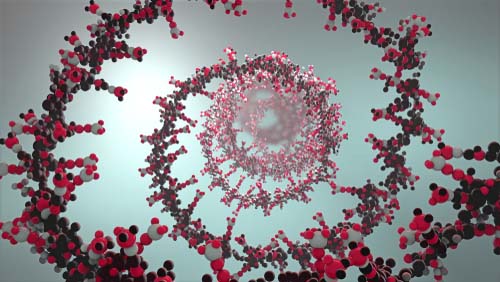Nucleic Acids
Instructions for every living thing
Nucleic acids are large, information-storing molecules found in all lifeforms. Their discovery as carriers of the genetic code in 1944, along with the revealing of their three-dimensional structure in 1953, revolutionized the study of biology and began an era of intensive genetics research that continues today.

All nucleic acids found in nature are long, chainlike molecules made from a sequence of nucleotides, each consisting of a nitrogenous base unit, a pentose sugar and a phosphate group that bridges one nucleotide to another.
The two primary forms that nucleic acids take—DNA and RNA—are very similar, but differ in ways that reflect their respective roles in carrying and propagating genetic information.
Deoxyribonucleic acid (DNA)
- Self-replicating
- Typically, a double-stranded structure made from two joined nucleotide chains
- Provides a template for RNA synthesis by the process of transcription
- Incorporates four bases: adenine (A), cytosine (C), guanine (G), thymine (T)
- Ribose sugar component lacks one hydroxyl group (OH) compared to RNA
Ribonucleic acid (RNA)
- Not self-replicating (constructed from a DNA template)
- Provides a template for protein synthesis by the process of translation
- Typically, a single-stranded structure of only one nucleotide chain
- Incorporates four bases: adenosine (A), cytosine (C), guanine (G), uracil (U)
- Ribose sugar component is intact, without the hydroxyl modification of DNA
Nearly since their discovery, the natural processes of nucleic acid transcription and protein translation have been successfully analyzed and reproduced in the lab—making possible an ever-evolving array of experimental approaches and techniques that have led to major advances in agricultural genetics and human disease risk assessment, along with ongoing breakthroughs in drug and vaccine development that have become increasingly critical in recent years.

